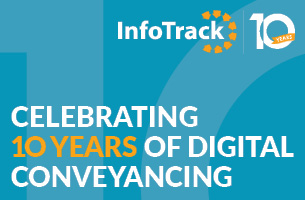Guest post by Judge Samuel A Thumma, Arizona Court of Appeals Division One, Arizona, USA, on behalf of Legal Futures Associate Thomson Reuters
Recently, I was honoured to be part of an online panel with participants in the legal system in England and Wales. We discussed how courts and practitioners have adopted new technologies – especially since the start of the pandemic – and their experiences with them.
I was proud to share our own story in Arizona, as well as the results of some research we have done surveying court users. Courts don’t necessarily have a reputation as being quick to change, but Covid-19 forced us to adapt.
Undoubtedly, some were uncomfortable with the pace of that change, but I think and hope they now appreciate that it was mostly for the better.
An honest appraisal
I say ‘mostly’ because the panellists were refreshingly open about the benefits and potential stumbling blocks of using technology in the courts. Security and data protection were major topics of conversation.
Technology can be both a solution – by providing more accessible and secure working systems than paper – and the source of more issues. Technologies that we come to rely on may not be as secure as we think they are, and an attack or outage can bring legal proceedings to a halt.
We also discussed access to justice from various perspectives. In family law cases and mental health tribunals, for example, technology can help people take part in proceedings remotely or make self-representation easier. However, it can also be a challenge to vulnerable people or a barrier to entry for those who lack access to reliable connection or adequate devices.
Accelerated digitisation
In some places in Arizona, simply getting to a courthouse may be a four-hour journey with no public transport options. If required to attend in person, logistical issues will require a party to take time off work, secure childcare and obtain transport just to attend, for example, a status conference for a simple traffic hearing.
I have been fortunate enough to be involved with several efforts in Arizona aimed to address some of our digital needs. In 2017, I chaired Arizona’s digital evidence task force, which looked at how to better deal with the growing volume of video and other multimedia evidence we were seeing. That effort contemplated a court digital evidence portal concept to better allow for such evidence.
Back then, we identified a solution in the UK called CaseLines, that later came to the United States and was then acquired by Thomson Reuters. Arizona has now phased in that solution (now called Case Center) in all 15 Arizona counties, covering a geographic area about twice the size of England and Wales combined.
This initiative towards a court digital evidence portal concept was already in progress before the pandemic, but Covid-19 certainly accelerated it.
I also co-chaired Arizona’s Plan B Workgroup, Arizona court’s ‘coping with Covid’ effort, which met weekly during the pandemic to share information about the many challenges trial courts were facing and to collectively work to identify solutions.
We didn’t have all the answers, but Arizona’s trial courts worked hard to keep their doors open and we wanted to share those experiences – both positive and negative – as broadly as we could. Not everything we discussed had to do with technology, but remote working, e-filing, and virtual hearings made up a significant part of our effort.
The Plan B Workgroup published several white papers to provide helpful guidance, and the final one from January 2022 can be found at the SMU Law Review Forum.
Crunching the numbers
Of course, our guidance was based on more than just hunches. We wanted to see how court users perceived the changes, so we looked at three surveys: one of the bench, one of the bar and one telephone survey of the public. It was great to see that, in large part, each of those three populations appreciated and welcomed the expanded use of technology by the courts in serving the public.
Although full survey responses are in the SMU Law Review Forum article noted above, 92% of court users said reduced travel time was a major benefit of remote hearings. Three-quarters (76%) said they needed to take less time off work to appear in court — both of which are significant in areas where accessibility is so challenging.
At the same time, we noticed some misgivings. A significant number (62%) of lawyers said that the diminished human element, a loss of non-verbal cues and unprofessional conduct was a disadvantage of remote hearings. This echoes some of the experiences of UK practitioners on the panel.
We also have data on how remote hearings affect failure-to-appear (FTA) rates. We looked, in particular, at FTA rates for initial hearings in eviction cases in Maricopa County justice courts. This is home to our state capital, Phoenix, and is slightly bigger than Wales.
In 2019, when in-person appearances were mandatory, the FTA rate was hovering just below 40% in these actions. If the defendant did not show, that would likely result in a default decision against the tenant. When remote hearings began as a result of the pandemic, the FTA rate dropped significantly, and, in 2022, it was consistently at about 25%. Provisional figures for 2023 are even stronger.
I’m not saying that all those who appear will win their case, but it does mean that their case is likely to be decided on the merits, not by default. To me, that’s a huge step forward for access to justice.
All this data gives me confidence to advocate for continued and expanded use of technology in the courts to enhance access to justice. We will continue to spearhead use of technology in Arizona and watch with interest how our peers in the UK, and elsewhere, handle their own challenges.
I hope we continue to learn from each other as we innovate together.












Leave a Comment